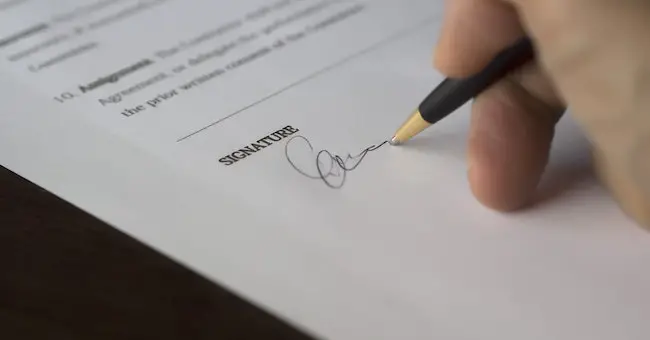How to Ask For a Refund?
If you’re unhappy with a product, it can be difficult to navigate. But knowing how to ask for a refund can help you get the best result possible.
Typically, retailers allow customers to return items within 30 or 60 days of purchase. However, some shops may have a no-refunds policy altogether.
How to Ask for a Refund on Steam?
If you purchased a game on Steam that you don’t like, you could ask for a refund. It’s a great way to get your money back and know that you made the right choice.
To start, log into Steam and click the Help button. It should bring up a window that shows your recent purchases. You can choose a recent purchase you want to refund from the list provided.
Next, you must decide where you’d like your refund sent. You can have it sent to your Steam Wallet or directly back to the payment method you used for the original purchase.
Before you submit your refund request, you must ensure that it meets all of the Steam refund policy requirements. These requirements include not having played the game for more than two hours and requesting a refund within 14 days of purchase.
However, you can also request a refund outside the 14-day window if you have a technical problem with the game. You’ll be given some tips on fixing the issue, but you can also elaborate on your reason for requesting a refund in the notes section.
For example, you may be having trouble playing a particular map or have found some bugs ruining your experience. You can add these notes to your refund request, and if you can provide enough evidence to support your claim, Steam will likely agree to give you a refund.
Refunds are generally approved within seven days of receiving the request, though it can take longer if you use an international payment method. If you’re disappointed with the decision, you can try challenging it by submitting another refund request, which will get another Valve employee to look at reviewing your case.
In addition, you’ll want to ensure you’re not abusing the refund system by using it to farm cards or achievements. It can be a serious problem, as it could prevent you from requesting a refund in the future.
As a gamer, purchasing games on Steam is an exciting experience. However, games sometimes may not work as expected or meet your expectations. In such cases, it is necessary to request a refund.

Step 1: Verify eligibility for a refund
Before requesting a refund, you must ensure that the game you have purchased is eligible for a refund. The refund policy of Steam states that a user can request a refund for any reason within 14 days of purchase if they have not played the game for more than two hours. If you have played the game for more than two hours, you may still be eligible for a refund if some technical issues or bugs prevent you from playing the game correctly.
Step 2: Start the refund process
To initiate a refund request on Steam, open the Steam client and log in to your account. After that, navigate to the “Help” section and click “Steam Support.” Here, you will find a list of your recent purchases. Next, choose the game that you want to request a refund for and click on it.
Step 3: Choose the reason for your refund request
After selecting the game, you will be presented with a list of options for why you want to request a refund. Steam requires you to select a reason for the refund to process the request. Some of the reasons include the game not working correctly, accidental purchases, or the game not meeting expectations. Choose the most relevant option and proceed.
Step 4: Submit the refund request
After selecting the reason for the refund request, Steam will provide you with additional information on the refund policy. Read the information carefully, and if you agree with the policy, click “Submit Request.” Steam will process your request and email you once the refund is approved.
How to Ask for a Refund for a Service?
A refund request is one of the most common customer service issues you’ll face, and it can be tricky to deal with. However, it can also be a great opportunity to learn more about your customers’ needs and improve your business.
In most cases, a customer’s refund request should be handled promptly and respectfully. The first step is to ask yourself if the refund request falls within your company’s policy. If it does, you should follow the process outlined in your policy.
If the issue is outside your policy, you may have to decline the refund request and explain why. However, it will help you remain professional while avoiding further aggravating the customer.
Another important step is to ensure that your refund policies are consistent and clear. It will protect your brand image and give you peace of mind when dealing with your customers’ refund requests.
Finally, you should always try to simplify the refund process for your customer. It sends a positive message about your business and can be the key to turning an unhappy customer into a satisfied one.
A good way to do this is to treat every customer like a human being, not just a number on a spreadsheet. The more you talk to them like this, the more likely they will be willing to work with you to solve their problems.
The next step is to ask them about their experience with the product or service they bought. It will allow you to understand what went wrong and how to best provide a solution for future customers.
Once you understand what the customer wants, you should be able to come up with an appropriate solution that will satisfy both parties. It could include a refund or adjusting your product or service to suit the customers needs better.
You might even be able to offer a discount on a future purchase. This approach will also show you’re looking to build a relationship with your customers, which can lead to repeat business in the future.
Sometimes, we pay for a service that doesn’t meet our expectations. It could be a gym membership, a subscription to an online platform, or even a landscaping service. Whatever the service, it may be time to ask for a refund if it doesn’t meet your needs or provide the value you expected.
Step 1: Read the terms and conditions
Before asking for a refund, it’s crucial to read the terms and conditions of the service you’ve subscribed to. Some services have specific refund policies; misunderstanding them is essential before requesting a refund. In addition, some services may not offer refunds, while others may have specific conditions under which they will issue a refund.
Step 2: Gather your information
When requesting a refund for a service, it’s important to have all the necessary information. It includes your account information, any receipts or invoices, and any correspondence you’ve had with the service provider. Having this information at hand will make the refund process smoother and faster.
Step 3: Contact the service provider
The next step is to contact the service provider directly. It can be done via email, phone, or the provider’s website. Explain your situation clearly and calmly and state that you’re requesting a refund. Be sure to provide any relevant information, such as your account details and the reason for your request.
Step 4: Follow up
If you don’t receive a response from the service provider, it’s following up is essential. Send a polite email or make a phone call to inquire about the status of your refund. If necessary, escalate the issue to a supervisor or manager.
Step 5: Consider other options
If the service provider refuses to issue a refund or if you’re not satisfied with the response you receive, consider other options. It may include disputing the charge with your bank or credit card company, filing a complaint with a consumer protection agency, or seeking legal advice.
How to Ask for a Refund From a Company?

Refunds are an inevitable part of running a business and should be treated seriously. They can help you protect your reputation and grow a satisfied customer base when done correctly. But if you don’t handle them well, they can quickly degrade your customer relationship and lead to much-lost revenue.
The first step is to ensure you’re dealing with the problem promptly and not allowing it to escalate. That means responding to the customer’s request as soon as possible and acknowledging it in writing to demonstrate that you understand they have an issue.
You’ll want to explain exactly what the problem is and describe what action you need them to take to resolve it. It could include a refund, repair, exchange, or store credit.
Be clear and concise when describing the product or service you purchased and important details about the transaction. Ideally, you’ll also have copies of receipts and other documentation to support your case.
If the product is defective or not as advertised, the merchant should honor their refund policy and give you your money back. However, you should also be prepared for some pushback from the merchant. If the first customer service agent can’t resolve your issue, ask for a supervisor or manager.
Refund requests are frustrating for both parties, and getting defensive, angry, or hurt is natural. But keeping your emotions in check is important to ensure the problem is resolved and your customer is happy.
Being upfront and honest about your feelings is also helpful when addressing a refund request. It will prevent unnecessary anger or frustration and help your customer feel in control of the situation.
While some companies operate a no-refund policy, others have strict terms and conditions. Regardless of what type of company you’re running, it’s crucial to handle refund requests appropriately. When you do, you’ll be protecting your business’s reputation and building a customer base that will stay loyal for years to come.
You may be entitled to a refund if you’ve purchased a product from a company that doesn’t meet your expectations or is faulty. However, asking for a refund can sometimes be a daunting task.
Step 1: Check the return policy
Before requesting a refund, checking the company’s return policy is essential. Many companies have specific policies regarding returns and refunds, and it’s important to understand them before making your request. In addition, it will help you understand what you need to do to request a refund and the company’s obligations.
Step 2: Gather your information
When requesting a refund, shaving all the necessary information is important. It includes your order details, receipts or invoices, and correspondence you’ve had with the company. Having this information at hand will make the refund process smoother and faster.
Step 3: Contact the company
The next step is to contact the company directly. It can be done via email, phone, or through the company’s website. Explain your situation clearly and calmly and state that you’re requesting a refund. Be sure to provide any relevant information, such as your order details and the reason for your request.
Step 4: Follow up
If you don’t receive a response from the company, it’s following up is essential. Send a polite email or make a phone call to inquire about the status of your refund. If necessary, escalate the issue to a supervisor or manager.
Step 5: Consider other options
If the company refuses to issue a refund or if you’re not satisfied with the response you receive, consider other options. It may include disputing the charge with your bank or credit card company, filing a complaint with a consumer protection agency, or seeking legal advice.
How Do You Ask for a Refund Sentence?

Many of us, at one time or another, have bought something that was the wrong size or color or did not fit as promised. Unfortunately, in some cases, the service we have received may not have lived up to expectations either.
If you’ve ever had to ask for a refund, you may have wondered how to do it most effectively. The key is to be concise and logical. In addition, you should also ensure that you have a clear refund policy in place so that you are not caught off guard by a customer’s request to reverse their decision.
Remember to include the most effective words and phrases in your message. It will help you ensure that your message is delivered most efficiently and provide a more pleasant experience for the customer in the long run. The best way to do this is to write a well-thought-out email. it’sIt’s a good idea to have this written down before you send it out so that you can double-check your work and catch any mistakes in print. You should also remember to mention your main points in the most logical order and that you’re available to answer any questions or concerns reasonably.
Asking for a refund can be an uncomfortable experience, but knowing how to do it effectively is important. Whether you’re requesting a refund for a product or service, your request must be polite, clear, and concise.
“Hello, I would like to request a refund for [product or service].”
It is a straightforward way to start your request. Be sure to include the name of the product or service and state that you’re requesting a refund.
“I’m afraid the [product or service] I received did not meet my expectations.”
Suppose the product or service didn’t meet your expectations; it explains its importance. Be specific and provide details, such as what the product or service should do and why it didn’t meet your needs.
“I received a defective [product]. Can I please request a refund?”
If the product you received is defective, it’s important to state that in your request. Also, include details about the defect and any issues you experienced.
“I’m not satisfied with the [service] I received. Can I please request a refund?”
If you’re requesting a refund for a service, it’s important to explain why you’re unsatisfied. Be specific and provide details about what the service was supposed to do and how it fell short.
“I would like to return the [product] and request a refund, as it did not work as expected.”
If the product you received didn’t work as expected, it’s important to state that in your request. Be specific about the issue you experienced and why the product didn’t meet your needs.
Tips for requesting a refund:
- Be polite and professional in your request.
- Provide details about the product or service and your order information.
- Explain why you’re requesting a refund and detail any issues you experienced.
- Follow up if necessary, but be patient and understanding.
FAQs
How do you politely request a refund?
I’m sending you this email to let you know that the thing I ordered was broken. I’m interested in learning how to process a product return and refund. I tried contacting the customer care number, but no one ever picked up. Please look into this and get in touch with me as soon as you can.
How do I ask for a refund email template?
Hello, [First Name] We received your request for a refund for [insert product name] and I’m [Enter your name] from [Insert company name]. You should be able to view this transaction in your account in 3 business days now that I’ve approved the request for [enter refund amount].
How do you ask for a refund sentence?
If you’re unhappy with your purchase, we promise to refund your money. If someone gives you a refund, they give you back the money you paid. We would happily provide a refund and free return shipping for the item. Each product may be returned by the client for a complete refund in its original state.
How do I ask for a refund without sounding rude?
“This is not effective for me.” Clearly state the issue and make it short. “Please give me a refund.” Be eminently polite, don’t argue, and simply reiterate your issue and desire.
When can I ask for a refund?
Within 30 days, a complete refund is available. Our statutory rights have a lovely additional enhancement with this. The Consumer Rights Act of 2015 modified our ability to return defective goods and receive a full refund in the majority of circumstances from a reasonable time to a predetermined timeframe (in the majority of circumstances), which is 30 days.
What is an example of a refund?
a sum of money that is returned to you, particularly if you are dissatisfied with a purchase of a good or service: I returned the radio to the store and requested/demanded/got/was granted a refund.


















